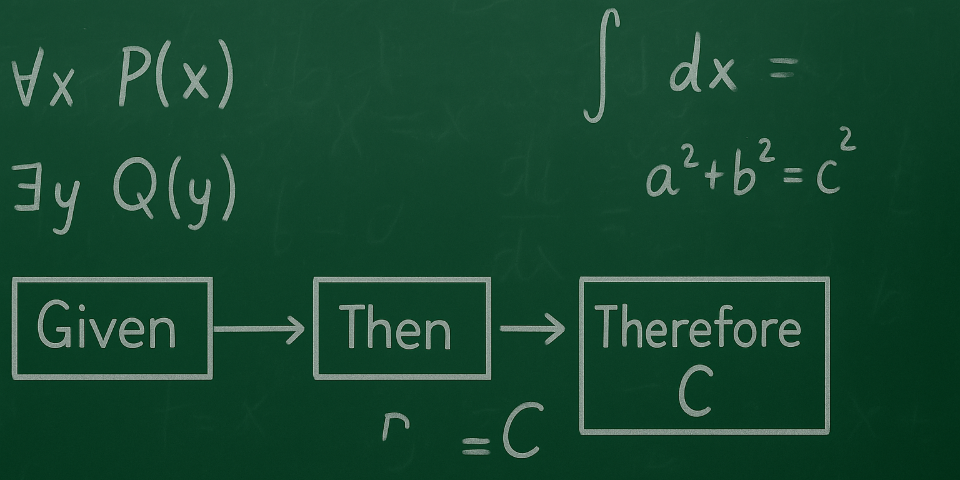
How I Learned to Break Down Proofs (and Think Like a Mathematician)
When I was studying for my topology exam, I got an email from Dr. Harmon that completely changed the way I approach mathematical proofs. I used to think that memorizing steps was the key, but his advice showed me how to study the structure of a proof.
That insight didn’t just help me on the exam — it helped me begin to think more like a mathematician.
Dr. Harmon’s Strategy for Studying Proofs
Here’s the advice he gave me, using the classic proof that the interval
Overall strategy: Proof by contradiction
• Form set of all numbers inthat can be covered by finite subcover; note it’s nonempty
• Nonempty subset of reals has supremum
• All reals up to supremum have finite subcover
• One more open set covers supremum
• If, this shows reals in greater than have finite subcover contradiction
• Concludeand interval is compact
This outline doesn’t just summarize the proof — it reveals its plan.
Once you see the structure, you’re left with smaller subtasks: understand each bullet point and how they logically build on one another. Then, stitch them together — and you’ve reconstructed the proof.
The Full Proof (Step-by-Step)
Let’s walk through the actual proof as written in the textbook, but guided by the outline Dr. Harmon provided:
-
Start with an open cover:
Letbe an open cover of . -
Define the set
This is the set of all numbers infor which the interval can be covered by finitely many open sets from the cover. -
Show that
is nonempty:
Since, and some contains , there’s a small interval around that can be covered. -
Let
:
By completeness of, the supremum exists because is bounded above. -
Reach toward a contradiction:
Suppose. Since is open and contains , there is some so that
-
Use this to expand the cover past
:
Because of the openness and howis defined, you can show that there’s an that also belongs to , contradicting the definition of as the least upper bound. -
Conclude:
The only possibility is. So has a finite subcover — that means it is compact.
Why This Changed My Approach to Math
Instead of treating proofs like a script to memorize, I now try to find their architecture — the core idea, the key turning point, and how each step fits into the whole.
This is especially powerful in topology, where intuition isn’t always geometric, and where compactness often requires an abstract argument.
Final Thoughts
If you’re a student learning how to read and write proofs, start outlining like this. It’ll make the logic transparent and train your brain to focus on structure over syntax.
It’s one of the most valuable lessons I’ve learned in math so far — and I owe it to one helpful email from my professor.